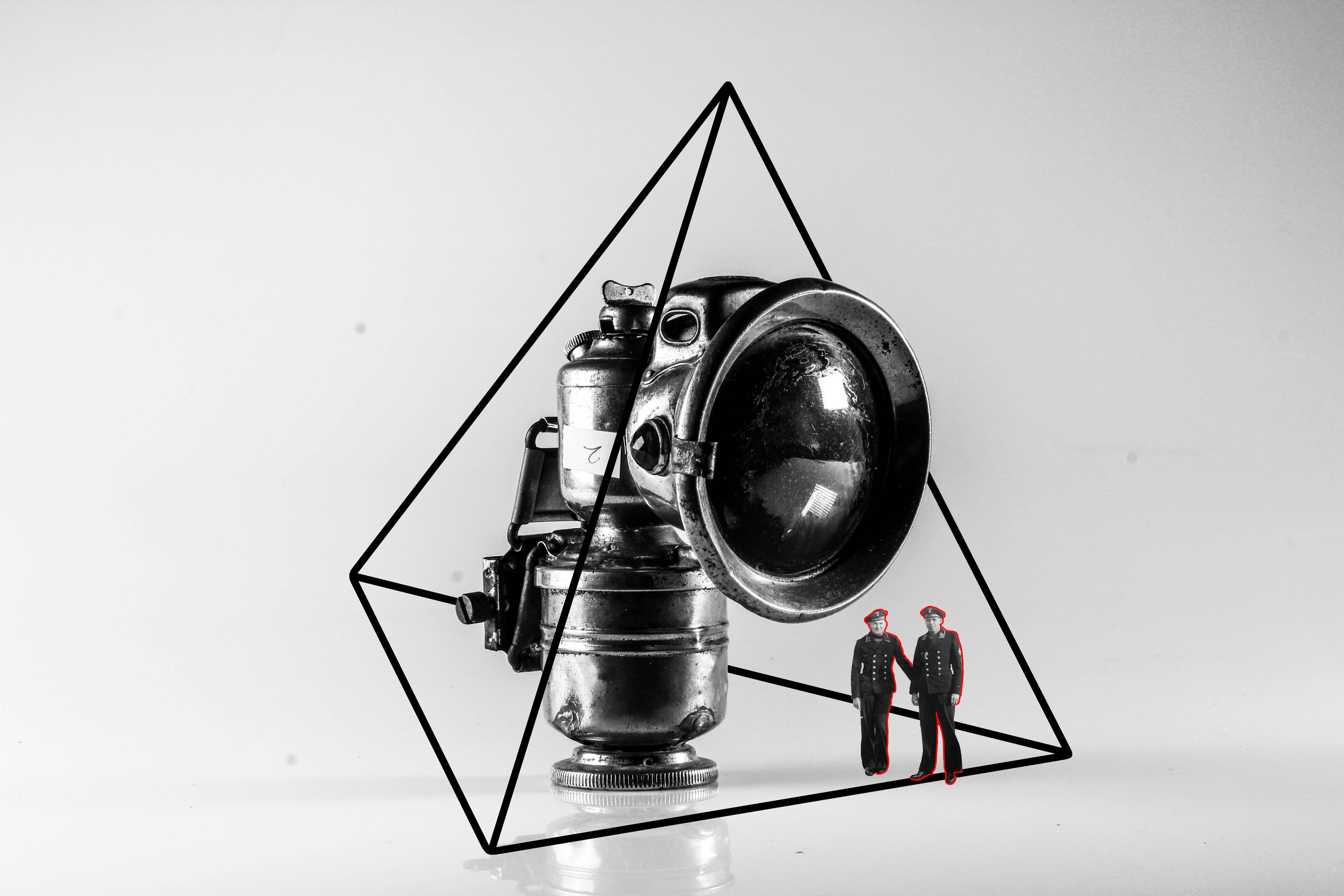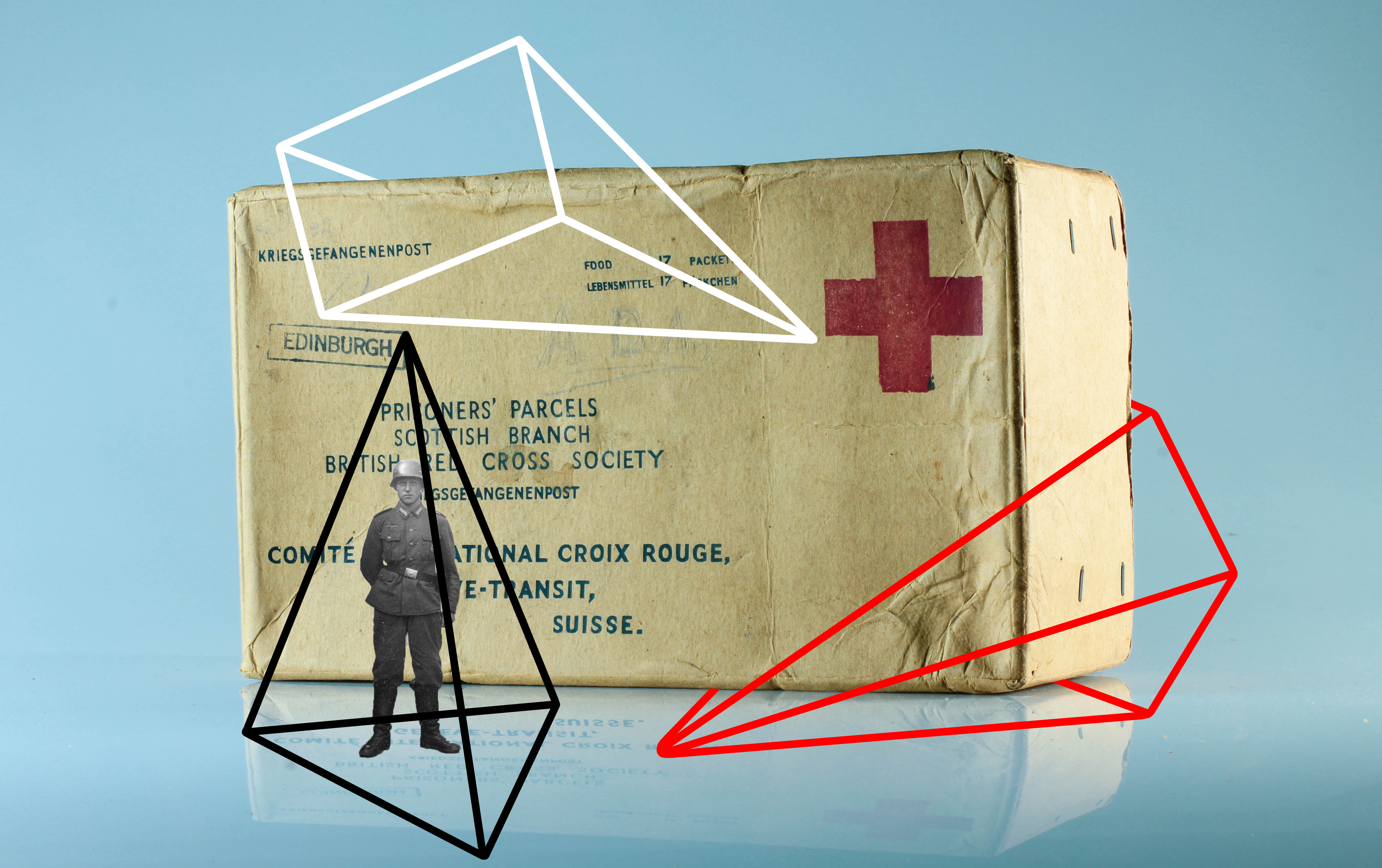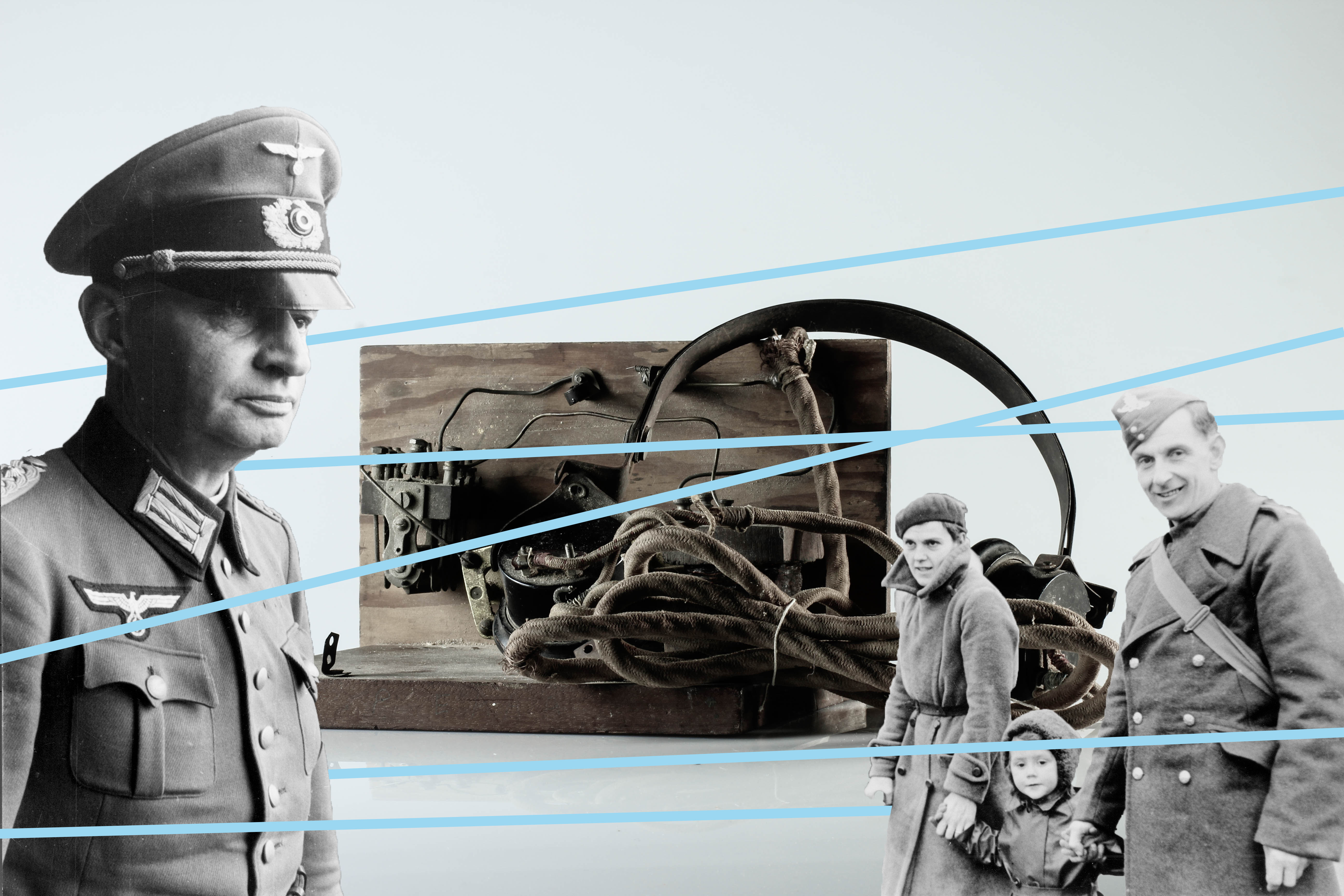In The First March of Gentlemen, Rafal Milach creates a narrative composed of real stories. He retells the historical childrens strike in Wrzenia in Poland from the early 20th Century, through collaged archive photographs from the 1950s and 1960. He has created a narrative to be read as a playful metaphor for the social and political tensions of the present.

When western Poland was under German occupation, over 100 students of the Catholic People’s School took part in a strike against the German influence on their education. The Germans aim was to remove the Polish language from their teachings.

Milach detached the figures from Szczepaniak’s photographs, both literally and figuratively, from their original context and placed them onto bright, candy coloured backgrounds. The design is “like a toy, like a candy – something nice to look at and to touch.” The figures are caged in geometric shapes, which as the book progresses, increasingly constrict and restrain them. The figures remain oblivious to their imprisonment. Ania Nałęcka-Milach, the designer of the book, created the physical object to reference the size and colour scheme of children’s school exercise books, as a camouflage for the serious subject matter.
https://en.artbooksonline.eu/art-20507
https://www.bjp-online.com/2018/06/milach-gentlemen/
MY RESPONSE:
In order to create these photomontages, I edited my still life Occupation objects on photoshop. These 4 outcomes are inspired by Rafal Milach, a photographer who created montages with figures caged in geometric shapes to retell the historical children strike in Wrzenia in Poland. His vivid colour scheme and “toy and candy” design has inspired me to further explore my editing skills on photoshop.
To create these several designs, I used archival images of German soldier from société jersiaise. The quick selection tool on photoshop allowed me to cut out the soldiers from their original photo and place it onto the still life photographs. Before using the line tool, I adjusted the figures using the transformation tool to change the size and placement. What I enjoyed the most about editing these photomontages was adding geometrical shapes onto the images to have the same contextual meaning as Milach’s book. The figures are restrained and caged by these lines to convey the restrictions the German’s introduced into Jersey when it was Occupied.




